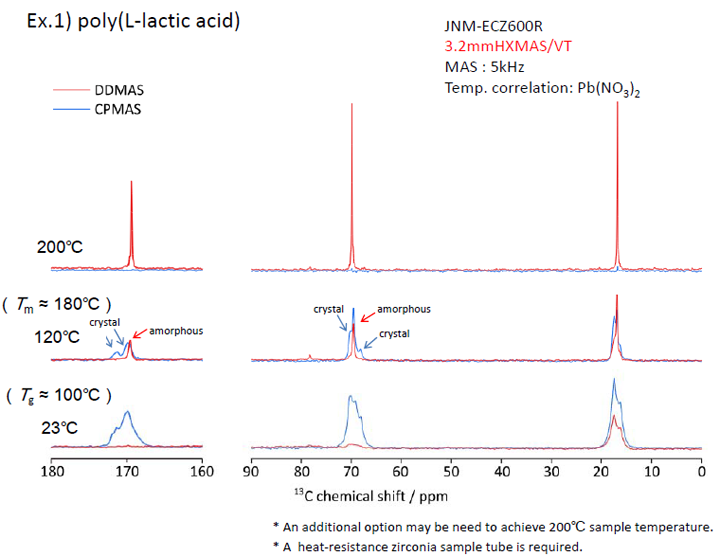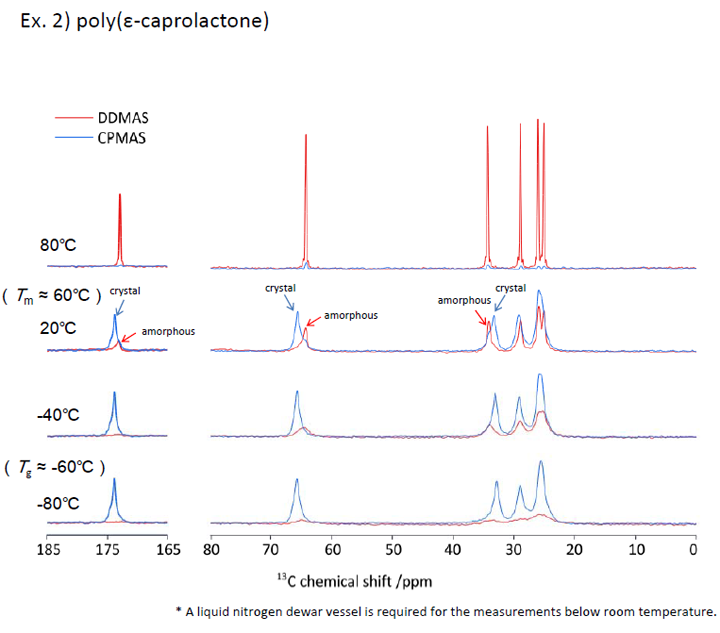Study on phase transition of crystalline polymers by using new extended VT HXMAS probe
NM160009E
Almost all crystalline polymers are mixture of crystalline and amorphous phases. Molecular mobility of these phases which greatly influence the mechanical property of materials changes at a glass transition temperature (Tg) and melting temperature (Tm). The new extended VT HXMAS probe is broadly applicable to study on thermal properties of crystalline polymers.
The basic methods of solid state NMR, CPMAS and DDMAS, are useful for identification of crystalline and amorphous peaks and analysis of their molecular dynamics.
Here we present practical temperature dependent analyses for crystalline polymers.


For the DDMAS measurements, signals from mobile regions are selectively enhanced by setting relatively short relaxation delay, 2s.
Below Tg, signals are observed only in the CPMAS spectrum because both crystalline and amorphous regions have low molecular mobility. Above Tg, rubber state amorphous signals appeared in the DDMAS spectra. Above Tm , very narrow molten state signals are observed in the DDMAS spectrum while any signals are absent in the CPMAS spectrum.
The basic methods of solid state NMR, CPMAS and DDMAS, are useful for identification of crystalline and amorphous peaks and analysis of their molecular dynamics.
Here we present practical temperature dependent analyses for crystalline polymers.
For the DDMAS measurements, signals from mobile regions are selectively enhanced by setting relatively short relaxation delay, 2s.
Below Tg, signals are observed only in the CPMAS spectrum because both crystalline and amorphous regions have low molecular mobility. Above Tg, rubber state amorphous signals appeared in the DDMAS spectra. Above Tm , very narrow molten state signals are observed in the DDMAS spectrum while any signals are absent in the CPMAS spectrum.
SEARCH APPLICATIONS
Related Products
Solutions by field
Are you a medical professional or personnel engaged in medical care?
No
Please be reminded that these pages are not intended to provide the general public with information about the products.
